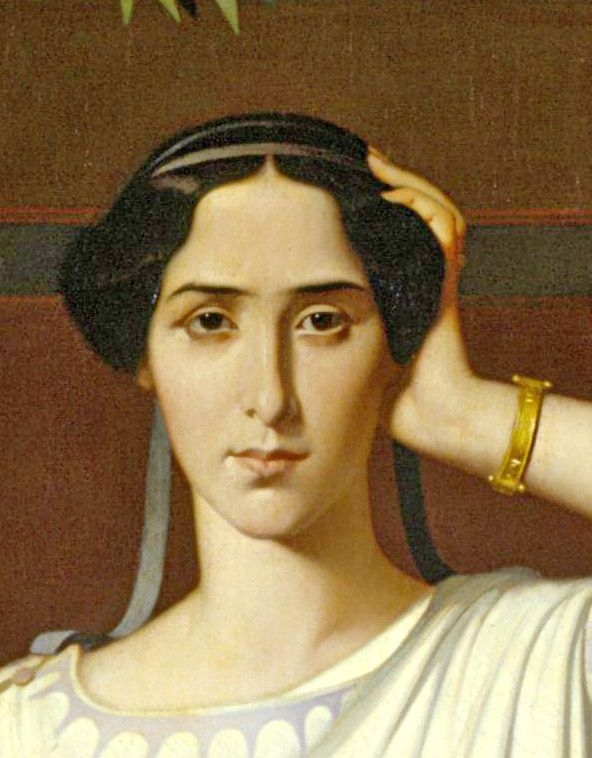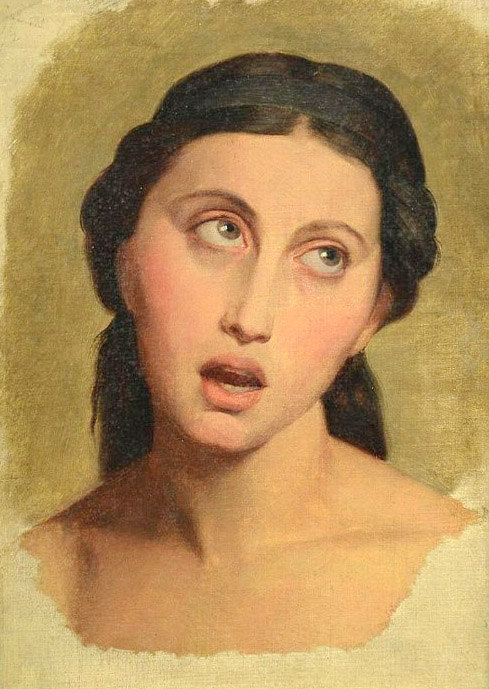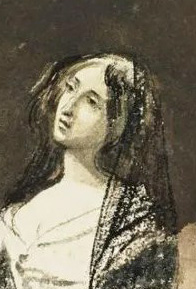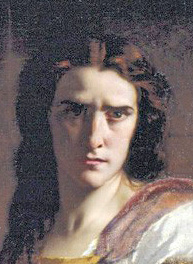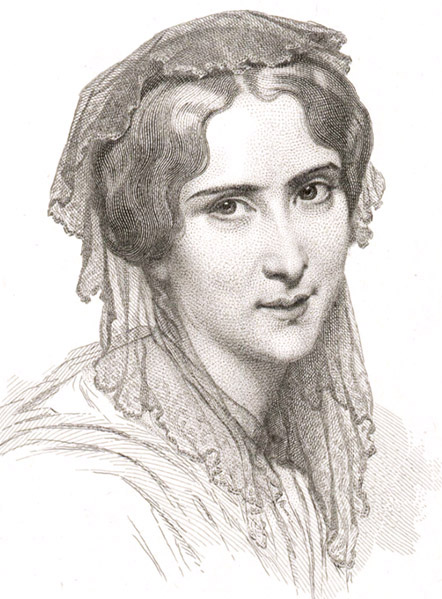Elisa-Rachel Félix (1821 - 1858), actress
1st image (Amaury Duval): Back to Une Soirée; 2nd: attributed to Ingres; 3rd: in Phedre, by Delacroix; 4th: in Macbeth, by Müller (1849) ; 5th: engraving by Henriquel-Dupont (1852).
The actress Rachel, first known for tragedy and later for comedy, is the missing link in Une Soirée au Louvre. Though originally planned for inclusion, she was ultimately removed in a 1854 revision —likely due to her close associations with numerous guests.
This is hardly surprising when we examine the images above, all created by attendees of de Nieuwerkerke’s vendredi-soirées. Rachel was well-acquainted, and at times romantically involved, with several writers and dramatists, including Ponsard, Augier, and Scribe, not to mention de Musset. She did not have her caricature made by Giraud, but he did paint her sister, Dinah.
De Nieuwerkerke appears to be the only one (to my knowledge) who did not sculpt her likeness, yet Rachel’s performances at his Louvre soirées were as celebrated as his candlelit evening visits to the Venus de Milo, and she was probably the only person that he personally accompanied into his Salon.
Her connections extended to other sculptors —Pradier created works featuring her, while Duret designed her tomb. Adding actors like Samson (her teacher) and Regnier (her stage partner), along with politicians such as de Morny, we arrive at a significant number of aristocratic guests who were closely acquainted with Mlle Rachel. Not depicted in the painting, but known to have had affairs with her, were Napoleon III and Plon-Plon, the youngest brother of Napoleon I.
Even in the revised composition, the glances exchanged by various guests subtly suggest where Biard (and/or de Nieuwerkerke) may have originally positioned her—front and center.
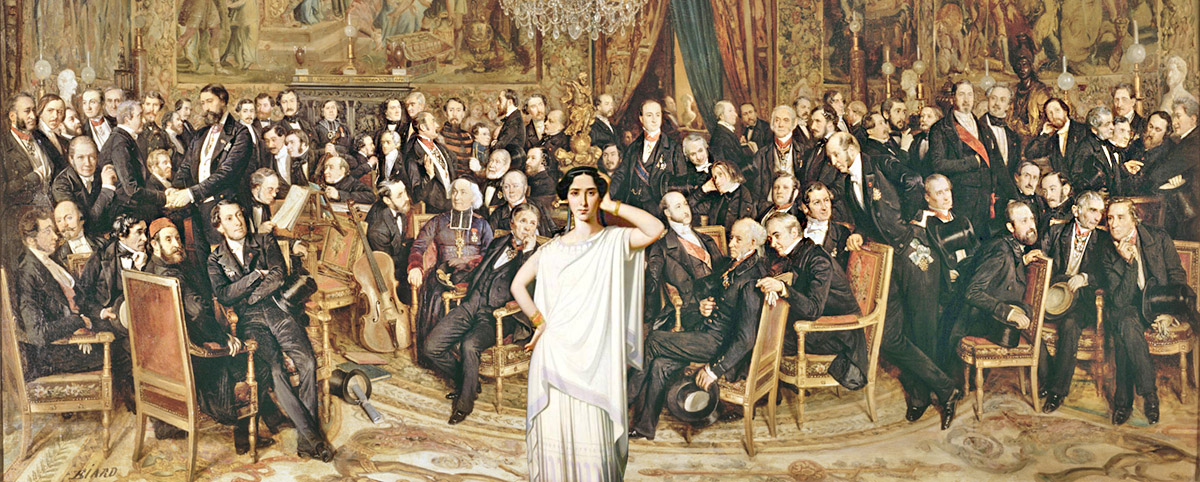
Completion of this profile planned for December 2025.
